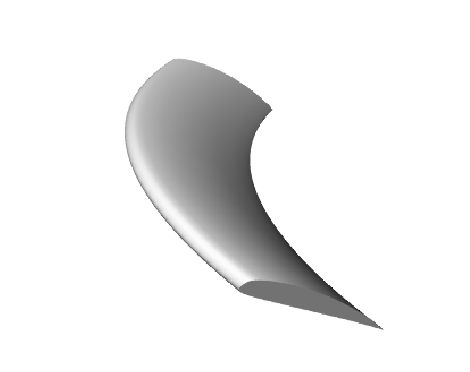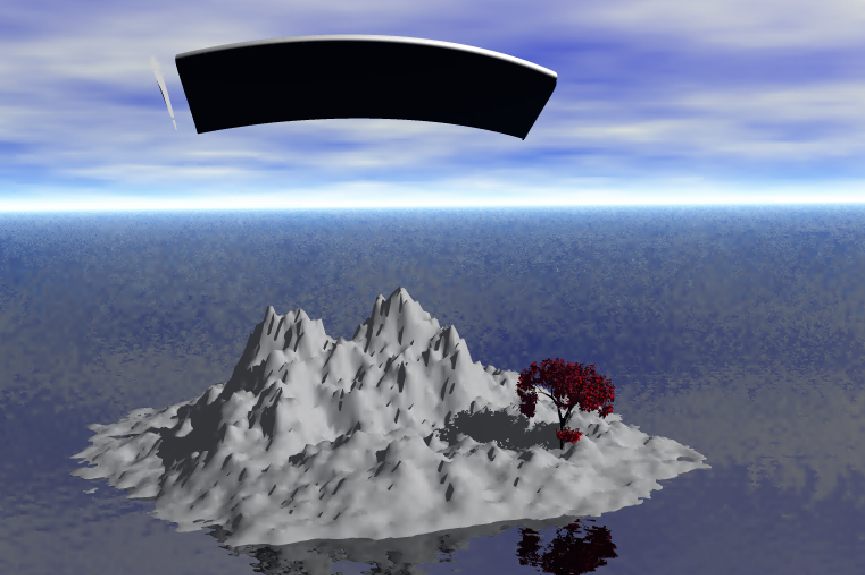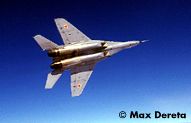Hi Wayne,
I just read your pdf on tethered
airfoils and find it interesting especially sections 2.3 and 2.4 on sailing
and wind powered airships.
I have had an interest in these areas for many years and have obtained a couple
of patents which I have attached for your interest.
I am an amateur inventor and have not the time to commercialize these inventions
/ patents.
I would be happy to correspond with you - as a someone with similar interests.
Where are you located? I am in Acton Massachusetts (about 15 miles from Boston).
Cheers
Malcolm Phillips
On Wed, May 26, 2010 at 3:32 PM, Wayne German wrote:
Malcolm,
It's funny. Over a decade ago I gave Jeff, the webmaster at yellowairplane.com,
a revised copy of a paper I had written another decade earlier yet as a project
leader at the Flight Research Institute. But then time passed and I forgot all
about it and my email address changed and I didn't think to update the paper. So
just in the last day or two I got around to updating my address and you contact
me immediately. It makes me wonder how many other interested people got dropped
by forgetting to change my email address.
In any event, what you have patented shows your heart and desires are definitely
in the right place, however, I now realize that the best would be a truly
efficient lighter-than-air wing with a gondola for people and cargo that would
be suspended below on ropes tethered to a submerged hydrofoil -- perhaps even at
a sufficient depth to avoid wave action. Therefore, while the wing might be at
any angle, the floor of the gondola would always be level -- i.e. no listing
moment -- and the wave action that would be transmitted up the tether would be
slight -- particularly if the hydrofoil were submerged beneath the wave action.
There would be better sailing craft possible -- nor more comfortable when under
way.
Also a little over half a year ago people all over the world got together for
the first International High Altitude Wind Power Generation Conference. There
too, were people who knew my article but not how to get together with me. And
unofficially I was recognized as being the father of modern tethered flight.
Since then I have found a lot more people interested in making high altitude
wind power generators than in making the best and most efficient sailing craft.
And my personal life-time's ambition is to make a craft that could fly anywhere
by the difference in the velocities in the air at low and high altitudes. The
wings could be made to be neutrally buoyant to where one could float at 5000
feet say and the other at 2000 feet -- in the event that there was no wind. But
with sufficient wind they could tack anywhere in the three dimensions of air.
I will attach my single page resume so you may know who I am technically, and it
would be nice if you were to do likewise. I always like to know who I am talking
to.
Also, currently, there is a small but dynamic group that I communicate with
regarding tethered flight. Currently they all seem pretty focused on generating
wind power, such as from the low level jets that travel just about 1000 feet
above the Great Plains and elsewhere. Dave Santos is one member of our group. He
was my protg after reading my article, but now what other people dream about
doing if they had enough money Dave does on a small scale with pieces and parts
he finds mostly in his back yard. Unbelievably amazing. Dave has unimaginable
drive. All of the rest of us worldwide just follow along on his bow wave. Joe F.
catalogs everything remotely interesting on his website:
AirborneWindEnergy.Com . He
would certainly like to be able to post your patents if you would like him to do
so. Also I bet Jeff at YellowAirplanes.com would probably be interested too. And
lastly, in our small group is John O. who lives in Africa but acts kind of like
the elder statesman of our group. While others of us can get quite opinionated,
John always demonstrates considerable tact and diplomacy.
I don't know if you want to participate regarding high altitude wind power
generation predominately right now, but if you do tell me so and I will hook you
up. Otherwise, we can talk about sailing most efficiently and perhaps flying
without fuel by tacking in air alone if you are interested.
God bless,
Wayne
From: Malcolm Phillips
To: Wayne German
Sent: Wed, May 26, 2010 9:26:47 AM
Subject: Tethered Airfoils
From: Malcolm Phillips
To: Wayne German
Sent: Wed, May 26, 2010 1:36:39 PM
Subject: Re: Tethered Airfoils
Hi Wayne,
I came across your paper from the airbornewindenergy email list.
I have attached my old resume. It looks like we have both worked in high tech.
And I assume from your area code, that you live in the Portland OR area.
I once built a spreadsheet to show the drag generated at various speeds by the
various methods of supporting a payload mass over water.
e.g. Submerged streamlined torpedo, hydrofoil, surface hull, wing and
streamlined blimp/airship.
I was a little surprised that the blimp/airship had the lowest drag over a large
range of low speeds - about 1/10 that of a much smaller torpedo.
(It makes sense when you think about it because friction is related to fluid
density.)
And of course minimizing drag (or drag/lift) is the only way to increase sailing
speed (measured as a ratio of wind speed).
I agree that transporting people (the payload) in the airship would be much more
comfortable.
Sadly, however my experiments with small tethered blimps have found them to be
very tricky, and I suspect impractical for many sailing uses.
While working on my patents (I did most of it myself) I remember coming across a
patent for a device which would use differences in the relative wind
velocities at different altitudes for propulsion. (I found and attached it in
case you have not come across it - Patent 6402090.)
I have been following the airborne wind energy progress somewhat, and would be
happy to connect with like minded people.
You (collectively) are welcome to post my patents (they are after all in the
public domain) but more attention would be fun.
Cheers
Malcolm
Hi y'all,
Malcolm contacted me about his patents regarding using blimps for tacking. You
can refer to them below.
Malcolm,
I live in Newberg Oregon, close to Portland Oregon, and home to the Quaker
Church, George Fox College (rated one of the ten best), and also home to more
Christians per capita and churches per capita than any other city in the United
States. It's a real step back in time about 40 or 50 years.
Also, another interesting fact that you might want to file away is that all of
Oregon's beaches are undeveloped and available for use by anyone. More to the
point is that some beaches allow you to drive cars or trucks. Therefore, it
could be a really great place to test your creations at whatever speed you like
by pulling them down the beach at your desired speed.
I thought you found my resume on yellowairplane.com . I was mistaken. But you
might like that website too.
The patent you sent me only allows balloons in a wind to travel anywhere from
due north to due south but not to tack into the wind so as to be able to go
anywhere in a series of tacks. I thank you for the effort though. I am hereby
asking Joe Faust, the
airbornewindenergy.com collator of such information to include access to it
on his website in case other people might be interested.
It happens that Dave Santos and I were talking about being able to fly without
fuel anywhere by tacking in air alone at the first international conference on
high altitude wind power generation and then right next to us a guy piped up and
said he had already done it. For about a decade or more I thought it was my
idea. But then he showed us his patent. Sure enough he did it. And rather than
doing it with homemade wings as I had envisioned it, he had done it by tying two
sailplanes together at the different ends of a rope!!! Come to find out, he was
a grand champion sailplane flyer and talked his friend into flying the other
sailplane. He also owned a company that made many
ultralight aircraft and has two on display
at the Smithsonian. Dave and I were real impressed, but I think I blew him away.
Over and over again that day I would talk to him about different ideas I would
have regarding flying without fuel by tacking and using tethers for wind power
systems and in a minute or two he would draw everything out on a napkin and
point out the difficult areas to consider!!! I had worked with some of the
brightest at Boeing, but this guy really blew me away. His first name is Dale. I
forget what his last name is though. He also had wind power and wind speed
mapping software he was trying to sell. Unfortunately, he has not chosen to keep
up contact ever since. You might be lucky.
But flying with one wing at higher altitude than the other is like having a sail
in a faster fluid above a keel in a slower fluid. The physics are just like
sailboats, but in the three dimensions of air rather than the two dimensions at
the surface of the oceans.
What I add to the equation is the prospect of being able to make wings whose
density can be adjusted so they come to rest at any altitude. Therefore, two
such wings could merely hover in place in the absence of any wind -- with one at
high altitude and the other at low altitude -- in perfect position to "fly"
again whenever any wind would occur. One reason I say this is that I spent
probably five years or more studying what kinds of materials and adhesives could
possibly be used to make such craft very quickly and yet very robust. In fact,
regarding these issues you may want to read the books written by Bernard Smith,
the retired technical director for the naval weapons laboratory. In terms of
trying to use kites to sail he was the grand daddy of them all. His book, the 40
knot sailboat, and one about "flip-tackers"..., are really less -- as is an
article in aeronautical journal. If you are really interested I will try to get
you a reference to that article. It is really great. But I have to dig it out
first.
Joe and Jeff, you guys would really love this article too. If I have it scanned
and hopefully read through optical character generating software to make a
really great article, would you guys consider putting it on your websites for
everyone else that should see it too?. Way back then he even had drawings of
kites pulling freighters and talked about the sizes that airfoils should have
with respect to hydrofoils, and all sorts of really neat things like that.
But the point I was going to make is that he failed miserably on many attempts
to discover a way to make lighter-than-air wings or neutrally buoyant wings
without having everything self-destruct sooner or later. It took me five years,
like I said, but now I now how to do so very quickly in a manufacturing
environment and at exceptionally low cost. After five years you begin to see the
obvious.... I would consider discussing these matters with those who sign
non-disclosure agreements first.
By the way the one aspect of truly efficient tacking that Bernard Smith also
pointed out is that it is possible to tack to any location anywhere -- such as
from Portland to Tokyo -- and arrive at Tokyo in less time than the wind would
take to blow from Tokyo to Portland. It's very strange, but true, and shows just
how great the potential could be in making truly efficient craft that could tack
over water or in the air.
This brings up another point I would like our little fraternity to vote on. At
our meeting in Chico CA at the first international conference of high altitude
wind power generators, Christine the moderator said that she did not want to see
our organization consider applications that derive power from wind be used to
propel water craft. Somehow, it always seemed to be okay to propel aircraft that
might fly without fuel by tacking though.
Personally, I think any and all means to extract power from wind for any purpose
should find a welcome home with us provided it is kite based (i.e. has a
tether), or is high altitude based. Do you agree?
And also I think the conference was divided between those who simply wanted to
show their products, and those of us who dearly wanted to pool our talents to
push the edge of the envelop in these regards. They got mad at me particularly
for wanting to see us grow our knowledge base as fast as possible -- even at the
conference. And I was just as disappointed that they had no desire to share or
discuss technology. All they wanted was to advertise their products. I think we
should, if we haven't by default, "form a more perfect union". Do you agree?
And if you agree, what about having our conference via GoToMeeting so people
anywhere can participate together -- even in scheduled small groups -- at far
less cost -- and maybe more frequently than just once a year. This way, our
friend John and others around the world could participate at far less cost and
no time spent travelling. Do you agree?
|





